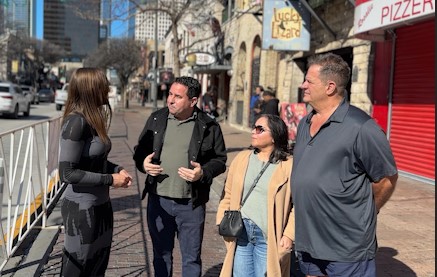Sixth Street's Surprising Sales Slump: Why Businesses Are Staying Calm

As part of a strategic transformation, new fences have been strategically installed along Sixth Street, marking the initial phase of a comprehensive plan to fully reopen the street to vehicular traffic. The broader vision extends beyond mere infrastructure changes, aiming to enhance the safety of the entertainment district and attract a larger number of visitors, ultimately revitalizing the area's vibrant atmosphere and economic potential.
City planners are carefully implementing this multi-stage approach, with the current fence installation serving as a critical first step towards creating a more accessible, secure, and dynamic urban environment. By methodically addressing traffic flow and pedestrian safety, the initiative seeks to strike a delicate balance between maintaining the district's energetic character and implementing necessary improvements.

